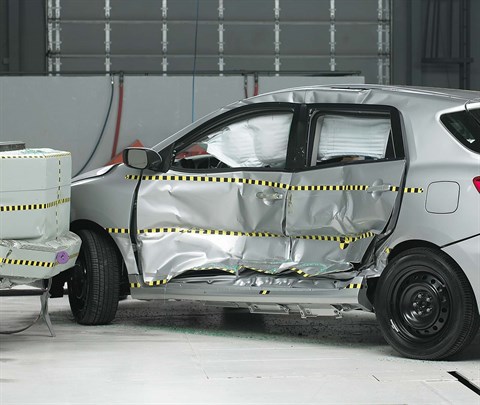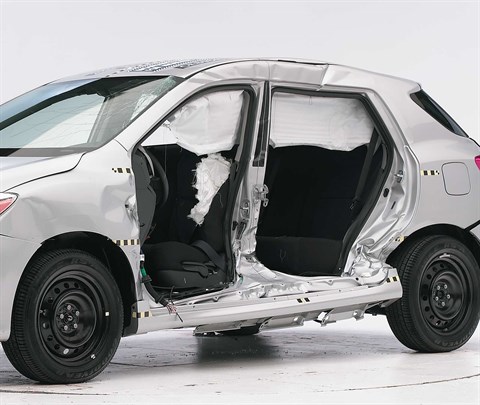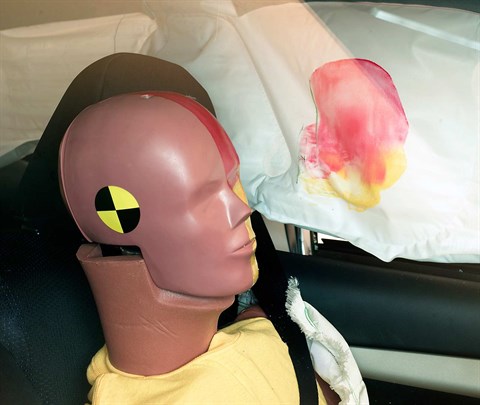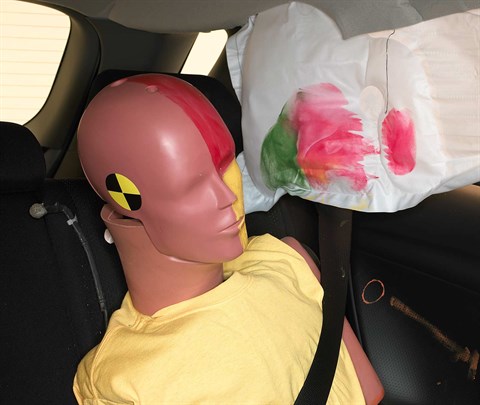Moderate overlap front: original test
Rating applies to 2009-13 models
Tested vehicle: 2009 Toyota Matrix S wagon
The Toyota Matrix and Pontiac Vibe were redesigned for the 2009 model year. A small number of 2010 Pontiac Vibes were built before the car was discontinued. The Matrix was discontinued after the 2013 model year in the U.S. Frontal ratings are assigned by the Institute based on a test conducted by Toyota.
| Evaluation criteria | Rating |
|---|---|
| Overall evaluation | |
| Structure and safety cage | |
| Driver injury measures | |
| Head/neck | |
| Chest | |
| Leg/foot, left | |
| Leg/foot, right | |
| Driver restraints and dummy kinematics | |
Side: original test
Rating applies to 2009-12 models
Tested vehicle: 2009 Toyota Corolla Matrix wagon with standard front and rear head curtain airbags and standard front seat-mounted torso airbags
The Toyota Matrix and Pontiac Vibe were redesigned for the 2009 model year. A small number of 2010 Pontiac Vibes were built before the car was discontinued.
| Evaluation criteria | Rating |
|---|---|
| Overall evaluation | |
| Structure and safety cage | |
| Driver injury measures | |
| Head/neck | |
| Torso | |
| Pelvis/leg | |
| Driver head protection | |
| Rear passenger injury measures | |
| Head/neck | |
| Torso | |
| Pelvis/leg | |
| Rear passenger head protection | |

View of the vehicle and barrier just after the crash test.

View of the vehicle after the crash with doors removed, showing the side airbags and damage to the occupant compartment.

Smeared greasepaint shows where the driver dummy's head was protected from being hit by hard structures by the side curtain airbag.

Smeared greasepaint shows where the rear passenger dummy’s head was protected by the side airbag.
Head restraints & seats
Seat type: Manual cloth seats AHR
| Overall evaluation | |
|---|---|
| Dynamic rating | |
| Seat/head restraint geometry |
About the head restraint & seat test
Currently, IIHS tests apply only to front seats.
